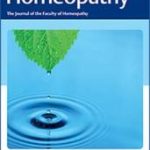M. Saks
Bringing together the orthodox and alternative in health care
Compl Ther Med, 2003, 11 (3), 142-145

This paper charts the developing historical relationship between orthodox and alternative medicine in Britain, focusing on the work of health practitioners. It begins by defining the concepts of orthodox and alternative medicine, noting that this was not really a meaningful distinction until the mid-nineteenth century with the rise of the medical profession. Before this time there was a relatively undifferentiated playing field. Thereafter doctors gained state-underwritten professional standing, with alternative therapists becoming increasingly marginalised by the mid-twentieth century. However, in the wake of the medical counterculture of the 1960s and 1970s there has been growing public interest in alternative medicine coupled with an associated increase in the numbers of its practitioners, particularly in the private sector. Despite initial resistance, alternative medicine has now gained greater acceptance by medical orthodoxy. The paper concludes by considering how orthodox and alternative health care can be brought together in more integrated fashion in the futurefor the benefit of the wider public.





